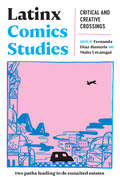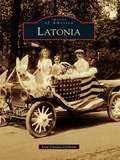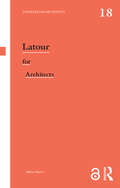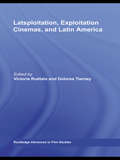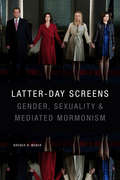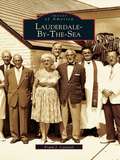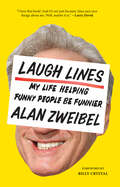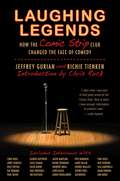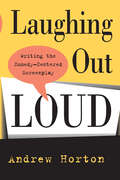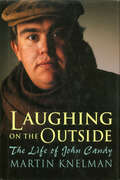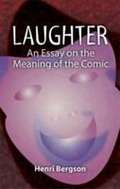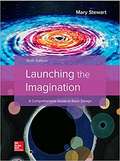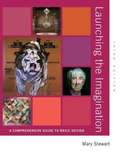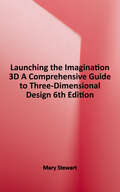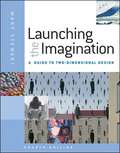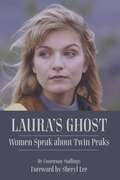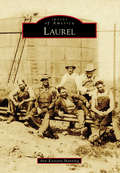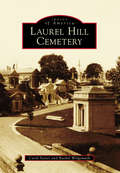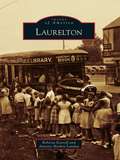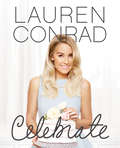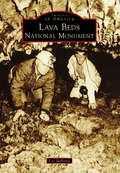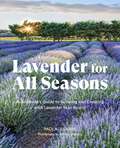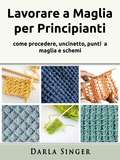- Table View
- List View
Latinx Comics Studies: Critical and Creative Crossings (Critical Graphics)
by Marcel Brousseau Frederick Luis Aldama Terry Blas Héctor Fernández L’Hoeste Francisca Cárcamo Rojas Jessica Rutherford Stephanie Contreras Jennifer Caroccio Maldonado Nicky Rodriguez Katherine Kelp-Stebbins Kaitlin E. Thomas Héctor Rodriguez Katlin Marisol Sweeney-Romero Maite Urcaregui Breena Nuñez Fernanda Díaz-Basteris Lars Allen Conrado Parraguirre Jennifer Gómez Menjívar Nicole Ann Amato Jennifer Gómez-MenjivarLatinx Comics Studies: Critical and Creative Crossings offers an intersectional and interdisciplinary approach to analyzing Latinx studies and comics studies. The book draws together groundbreaking critical essays, practical pedagogical reflections, and original and republished short comics. The works in this collection discuss the construction of national identity and memory, undocumented narratives, Indigenous and Afro-Latinx experiences, multiracial and multilingual identities, transnational and diasporic connections, natural disasters and unnatural colonial violence, feminist and queer interventions, Latinx futurities, and more. Together, the critical and creative works in this collection begin to map out the emerging and evolving field of Latinx comics studies and to envision what might be possible in and through Latinx comics. This collection moves beyond simply cataloguing and celebrating Latinx representation within comics. It examines how comics by, for, and about Latinx peoples creatively and conceptually experiment with the very boundaries of “Latinx” and portray the diverse lived experiences therein.
Latonia
by Lisa Curtiss GillhamThe Latonia Racetrack, opened in 1883, was one of the country's finest. Its presence spurred development, and the resulting town eventually took its name from the famous track. Latonia flourished with the help of the railroad, which carried visitors into town and hauled coal from the mining regions of southeastern Kentucky. The racetrack and railroad made Latonia a bustling center of activity and brought characters from all walks of life. Railroaders and stable boys tipped their hats to wealthy celebrities arriving to play the odds at the track. Famous jockeys, church-going housewives, and con men crossed paths at the racetrack and at Ritte's Corner. Named for a saloon, Ritte's Corner was considered the heart of Latonia, and it was a place where townspeople gathered to socialize, swap stories, and get the latest news. In 1909, Latonia was annexed by Covington, but it continues to be a neighborhood with its own identity and a place families call home, generation after generation.
Latour for Architects (Thinkers for Architects)
by Albena YanevaBruno Latour is one of the leading figures in Social Sciences today, but his contributions are also widely recognised in the arts. His theories ‘flourished’ in the 1980s in the aftermath of the structuralism wave and generated new concepts and methodologies for the understanding of the social. In the past decade, Latour and his Actor-Network Theory (ANT) have gained popularity among researchers in the field of architecture. Latour for Architects is the first introduction to the key concepts and ideas of Bruno Latour that are relevant to architects. First, the book discusses critically how specific methods and insights from his philosophy can inspire new thinking in architecture and design pedagogy. Second, it explores examples from architectural practice and urban design, and reviews recent attempts to extend the methods of ANT into the fields of architectural and urban studies. Third, the book advocates an ANT-inspired approach to architecture, and examines how its methodological insights can trace new research avenues in the field, reflecting meticulously on its epistemological offerings. Drawing on many lively examples from the world of architectural practice, the book makes a compelling argument about the agency of architectural design and the role architects can play in re-ordering the world we live in. Following Latour’s philosophy offers a new way to handle all the objects of human and nonhuman collective life, to re-examine the role of matter in design practice, and to redefine the forms of social, political and ethical associations that bind us together in cities.
Latsploitation, Exploitation Cinemas, and Latin America (Routledge Advances in Film Studies)
by Dolores Tierney Victoria RuétaloExploring the much neglected area of Latin American exploitation cinema, this anthology challenges established continental and national histories and canons which often exclude exploitation cinema due to its perceived ‘low’ cultural status. It argues that Latin American exploitation cinema makes an important aesthetic and social contribution to the larger body of Latin American cinema – often competing with Hollywood and more mainstream national cinemas in terms of popularity.
Latter-day Screens: Gender, Sexuality, and Mediated Mormonism
by Brenda R. WeberFrom Sister Wives and Big Love to The Book of Mormon on Broadway, Mormons and Mormonism are pervasive throughout American popular media. In Latter-day Screens, Brenda R. Weber argues that mediated Mormonism contests and reconfigures collective notions of gender, sexuality, race, spirituality, capitalism, justice, and individualism. Focusing on Mormonism as both a meme and an analytic, Weber analyzes a wide range of contemporary media produced by those within and those outside of the mainstream and fundamentalist Mormon churches, from reality television to feature films, from blogs to YouTube videos, and from novels to memoirs by people who struggle to find agency and personhood in the shadow of the church's teachings. The broad archive of mediated Mormonism contains socially conservative values, often expressed through neoliberal strategies tied to egalitarianism, meritocracy, and self-actualization, but it also offers a passionate voice of contrast on behalf of plurality and inclusion. In this, mediated Mormonism and the conversations on social justice that it fosters create the pathway toward an inclusive, feminist-friendly, and queer-positive future for a broader culture that uses Mormonism as a gauge to calibrate its own values.
Lauderdale-By-The-Sea (Images of America)
by Frank J. CavaioliLocated on Florida's Gold Coast, Lauderdale-By-The-Sea is noted for its beach activities, living reef system, and family-oriented lifestyle. The quiet beauty of the sea and sand amid friendly low-rise lodgings and quaint stores and restaurants draws visitors to this thriving paradise year-round. Lauderdale-By-The-Sea developed slowly around the original platted land set down by William F. Morang in 1924 as he and others promoted a land boom. The completion of the Flagler Railroad by 1900 paved the way for regional growth. Lauderdale-By-The-Sea lacked a railroad terminal and remained undeveloped in the early years. Melvin I. Anglin pioneered in chartering the town in 1927 and became its first mayor. Two hurricanes and the 1929 stock market crash burst the real estate bubble, leading to the demise of the charter in 1933. In 1947, citizens drew up a new charter that was certified by the state legislature two years later. Construction of the Anglin Pier in 1941 and the Commercial Boulevard Bridge over the Intracoastal Waterway in 1965 broke down the isolation of the town. Annexation of the unincorporated area north to Pompano Beach completed its growth cycle.
Laugh Lines: My Life Helping Funny People Be Funnier
by Alan ZweibelWith his tender, funny memoir of four decades in the business, one of the first writers for Saturday Night Live traces the history of American comedy. Alan Zweibel started his comedy career selling jokes for seven dollars apiece to the last of the Borscht Belt standups. Then one night, despite bombing on stage, he caught the attention of Lorne Michaels and became one of the first writers at Saturday Night Live, where he penned classic material for Gilda Radner, John Belushi, and all of the original Not Ready For Prime Time Players. From SNL, he went on to have a hand in a series of landmark shows—from It’s Garry Shandling’s Show to Curb Your Enthusiasm. Throughout the pages of Laugh Lines Zweibel weaves together his own stories and interviews with his friends and contemporaries, including Richard Lewis, Eric Idle, Bob Saget, Mike Birbiglia, Sarah Silverman, Judd Apatow, Dave Barry, Carl Reiner, and more. The book also features a charming foreword from his friend of forty-five years Billy Crystal, with whom he co-wrote and co-produced the upcoming film Here Today that stars Crystal and Tiffany Haddish. Laugh Lines is a warmhearted cultural memoir of American comedy.“In Laugh Lines, Zweibel looks back, affectionately and informatively, at a career that began when he was a young deli worker grinding out jokes for old-school borscht belt comedians in his spare time, and that, after his “S.N.L.” years, included rewarding collaborations with, among others, Garry Shandling, Billy Crystal, Martin Short, Larry David and Dave Barry. . . . Fascinating.” —New York Times“Any comedy fan will thrill to see the contemporary art's invention through the eyes of consummate funny man Alan Zweibel. He takes you behind the velvet rope and makes you weep for all those artists who made us laugh. Screamingly funny—also very moving. A classic.” —Mary Karr“Alan Zweibel is legendary among us comedians. He is the man who delivers comedy with an emotional clout that makes him respected and revered.” —Steve Martin
Laughing Legends: How The Comic Strip Club Changed The Face of Comedy
by Chris Rock Jeffrey Gurian Richie TienkenOnce in a lifetime a venue comes along that changes show business dramatically, that fosters growth and camaraderie, experimentation and freedom. The Comic Strip is one of those places, and Laughing Legends is an inside look at how it all happened, straight from the mouths of the stars who built their careers on its stage. Owner Richie Tienken and a wealth of comics open their hearts and souls to share their most intimate memories, the laughs and tears, the good times and the bad, in order to paint an all-encompassing, behind-the-scenes history of this iconic club. Interviews include famous comedians, such as:Jerry SeinfeldGilbert GottfriedPaul ReiserLisa LampanelliGeorge WallaceBilly CrystalJim BreuerSusie EssmanLewis BlackRay RomanoAnd many more!Relive the excitement as these comics explain how they came to belong to the Comic Strip family, and how they went on to enjoy huge careers, bringing laughter to millions of people all over the world. This book is a must for any comedian or comedy lover's library!
Laughing Out Loud: Writing the Comedy-Centered Screenplay
by Andrew HortonWhoever wrote "Make 'em laugh!" knew that it's easier said than done. But people love to laugh, and good comedy will always sell. With the help of this complete and entertaining guide, writers and would-be writers for film and television can look forward to writing comedy that goes far beyond stereotypic jokes and characters. In Laughing Out Loud, award-winning screenwriter and author Andrew Horton blends history, theory, and analysis of comedy with invaluable advice.Using examples from Chaplin to Seinfeld, Aristophanes to Woody Allen, Horton describes comedy as a perspective rather than merely as a genre and then goes on to identify the essential elements of comedy. His lively overview of comedy's history traces its two main branches—anarchistic comedy and romantic comedy—from ancient Greece through contemporary Hollywood, by way of commedia dell'arte, vaudeville, and silent movies. Television and international cinema are included in Horton's analysis, which leads into an up-close review of the comedy chemistry in a number of specific films and television shows.The rest of the book is a practical guide to writing feature comedy and episodic TV comedy, complete with schedules and exercises designed to unblock any writer's comic potential. The appendices offer tips on networking, marketing, and even producing comedies, and are followed by a list of recommended comedies and a bibliography.
Laughing on the Outside: The Life of John Candy
by Martin Knelman“A truthful look at John Candy—affectionate but unblinking.” —San Francisco ExaminerFunny and gentle, John Candy was loved by millions of movie fans for playing true-to-life characters. Whether as the irrepressible bon vivant in Splash, the misunderstood slob in Uncle Buck, or the generous lonely salesman in Planes, Trains, and Automobiles, John Candy struck a perfect balance between self-deprecating humor and irresistible, emotional warmth. In this compassionate portrait of John Candy, award-winning journalist Martin Knelman reveals that behind the scenes, beneath the booming laughter, a man blessed by genius and goodness of heart was ultimately and sadly undermined by self-doubt and misguided ambition.“Laughing on the Outside celebrates the genius of John Candy.” —Vanity Fair“Candy’s is ultimately a sad story, one that Knelman has made sympathetic and memorable, too.” —Booklist“This book is a must for Candy’s fans and an ought-to for everyone else.” —Toronto Globe and Mail“Everyone knew the happy-go-lucky comic, but Knelman shows us the sad clown underneath, which ultimately enriches the image.” —Toronto Star
Laughter is a Wonderful Thing
by Joe E. Brown Ralph HancockHOW ONE MAN FOUND A WAY OF LAUGHTER AND GAVE IT TO THE WORLDEvery American has at one time or another known the pleasure of watching Joe E. Brown. Mirth-maker Joe, clown-prince of movies, radio and TV, however, is more than just a dispenser of gaiety and laughter.Ralph Hancock, famed foreign correspondent, has drawn a most accurate picture of one of the country’s outstanding citizens. You’ll laugh with, and feel sympathy for comedian Joe—the grease-painted Pagliacci of the footlights—as you read of a lifetime of all the human emotions.Joe E. Brown was born to bring laughter into the world. From the first day he realized people enjoyed him, he knew he was meant to continue in his role as self-appointed Ambassador of goodwill. Joe’s formula was simple and refreshing: Always leave ‘em laughing, even before you say goodbye.Co-author Hancock skilfully weaves a heart-warming tale of a humourist but—more important—a humanitarian who has never hesitated to cooperate with a cause which is pledged to the advancement of the human race.Laughter may be a wonderful thing, but it is also the tender tale of a father who knows the pleasures and sorrows of raising a family. The story of Joe E. Brown is a lifelike portrait of one of America’s most beloved personalities.
Laughter: An Essay on the Meaning of the Comic
by Henri BergsonIn this great philosophical essay, Henri Bergson explores why people laugh and what laughter means. Written at the turn of the twentieth century, Laughter explores what it is in language that makes a joke funny and what it is in us that makes us laugh. One of the functions of humor, according to Bergson, is to help us retain our humanity during an age of mechanization. Like other philosophers, novelists, poets, and humorists of his era, Bergson was concerned with the duality of man and machine. His belief in life as a vital impulse, indefinable by reason alone, informs his perception of comedy as the relief we experience upon distancing ourselves from the mechanistic and materialistic. "A situation is always comic," Bergson notes, "if it participates simultaneously in two series of events which are absolutely independent of each other, and if it can be interpreted in two quite different meanings. " The philosopher's thought-provoking insights (e. g. , "It seems that laughter needs an echo. Our laughter is always the laughter of a group. ") keep this work ever-relevant as a thesis on the principles of humor.
Launching the Imagination: A Comprehensive Guide to Basic Design
by Mary StewartLaunching the Imagination treats design as both a verb and a noun―as both a process and a product. Design is deliberate―a process of exploring multiple solutions and choosing the most promising option. Through an immersion in 2-D 3-D and 4-D concepts students are encouraged to develop methods of thinking visually that will serve them throughout their studies and careers.
Launching the Imagination: A Comprehensive Guide to Basic Design (3rd edition)
by Mary StewartDesigned for courses in Creativity, Two-, Three- or Four-Dimensional Design, Launching the Imagination offers a comprehensive framework on which students, teachers, and administrators can build. The approach in this third edition is refined, distilled, and updated, using over 600 examples drawn from traditional and contemporary sources. Interviews of artists and designers, known as Profiles, introduce students to working processes, career choices, and criteria for excellence from a remarkable group of masters. Launching the Imagination is available in a comprehensive volume treating 2D design, Creativity and Problem-solving, 3D design, and time-based (4D) design; or in split volumes containing either 2D or 3D design, plus the material on Creativity and Problem-solving. This edition of Launching the Imagination moves the content of the Core Concepts in Art CD-ROM to the Online Learning Center. With free access, this website, which engages students interactively with the elements and principles of art through numerous interactive exercises, has been re-organized and expanded.
Launching the Imagination: A Comprehensive Guide to Three-Dimensional Design
by Mary StewartDesigned for courses in creativity, two-, three- or four-dimensional design, Launching the Imagination offers a comprehensive framework on which students, teachers, and administrators can build. The approach in this third edition is refined, distilled, and updated, using over 600 examples drawn from traditional and contemporary sources. Interviews of artists and designers, known as Profiles, introduce students to working processes, career choices, and criteria for excellence from a remarkable group of masters. Launching the Imagination is available in a comprehensive volume treating 2D design, creativity and problem-solving, 3D design, and time-based (4D) design; or in split volumes containing either 2D or 3D design, plus the material on creativity and problem-solving. This edition of Launching the Imagination moves the content of the Core Concepts in Art CD-ROM to the Online Learning Center. With free access, this website engages students interactively with the elements and principles of art through numerous interactive exercises and has been reorganized and expanded.
Launching the Imagination: A Comprehensive Guide to Two-Dimensional Design
by Mary StewartNew and better than ever, Launching the Imagination treats design as both a verb and a noun - as both a process and a product. Design is deliberate - a process of exploring multiple solutions and choosing the most promising option. Through an immersion in 2-D concepts students are encouraged to develop methods of thinking visually that will serve them throughout their studies and careers.
Launching the Imagination: A Guide to Two-Dimensional Design (4th Edition)
by Mary StewartLaunching the Imagination treats design as both a verb and a noun--as both a process and a product. Through an immersion in 2-D concepts and problems, students are encouraged to develop ways of thinking visually that will serve them throughout their studies and careers. They learn that design is deliberate--a process of exploring a wide range of solutions and choosing the most promising option for further development.
Laura's Ghost: Women Speak About Twin Peaks
by Courtenay StallingsThis incredibly powerful book by media professor Courtenay Stallings explores the dark side of Twin Peaks through interviews with fans of the show who've experienced trauma in their own lives and worked through it with assistance from the character of Laura Palmer. In 1990, the groundbreaking television series Twin Peaks, cocreated by David Lynch and Mark Frost, opened with a murder mystery when a homecoming queen washed up on a rocky beach. Laura Palmer&’s character began as a plot device that triggered a small town to face its fractured self. After three seasons and a film, Laura Palmer is no longer just a plot device. Twin Peaks allows the audience to get to know the victim—a complex woman finding her strength while enduring incredible trauma. Laura&’s Ghost: Women Speak about Twin Peaks explores Laura&’s legacy through the perspectives of women in the fan community and women involved in the show. Actor Sheryl Lee examines the challenges of playing Laura Palmer. Filmmaker Jennifer Lynch discusses writing Laura&’s backstory in The Secret Diary of Laura Palmer. Grace Zabriskie argues about the complicity of Sarah Palmer, Laura&’s mother. Sabrina S. Sutherland, executive producer of Twin Peaks, talks about Laura&’s legacy. Women in the Twin Peaks fan community share their powerful and heart-wrenching stories of survival and what Laura Palmer means to them. This book is a reckoning in which women speak about trauma, mischief, humor, sexuality, strength, weakness, wickedness, and survival.
Laurel
by Ann Kooistra-ManningEarly Laurel, like many Montana frontier towns, was shaped by tenacious settlers who struggled to carve a living from a harsh, often unforgiving landscape in the wake of the Indian Wars. Laurel started as little more than a railway station and a handful of businesses serving railroad workers, farmers, and ranchers in the early 1880s. Irrigation projects soon transformed the dry, dusty prairies along the Yellowstone River near Laurel into productive farmlands. Homesteaders flocked to the valley. By 1908, Laurel had grown into a bustling shipping and servicing center for three major railroads and boasted the largest rail yard and roundhouse between Seattle and St. Paul. In the 1920s, it became a jumping-off point for tourists destined for Yellowstone Park. A decade later, Laurel staked its claim in the region's emerging oil industry when the Laurel Leaf refinery was built. This small, unassuming town has played a vital role in the development of the Yellowstone River Valley and beyond.
Laurel Hill Cemetery
by Carol Yaster Rachel WolgemuthEstablished in 1836, Philadelphia’s Laurel Hill Cemetery was one of the earliest rural cemeteries in America. The picturesque views and outstanding horticulture, along with sculptures and monuments designed by notable artists and architects—like Alexander Milne Calder, Alexander Stirling Calder, Harriet Frishmuth, John Notman, and Thomas Ustick Walter—attracted thousands of visitors. Laurel Hill became the desired place of burial for Philadelphia’s elite and the final resting place for those with last names like Widener, Wharton, Meade, and Elkins. The cemetery’s design was much admired and widely imitated, both locally and nationally. While the 20th century ushered in a steep decline for Laurel Hill, the establishment of a friends group in 1978 and the cemetery’s designation as a National Historic Landmark in 1998 signaled a transformation for the cemetery. Laurel Hill entered a new century as a revitalized and relevant institution. Once again, the cemetery is regarded as an important part of the community, a worthy destination for visitors, and a place to share in the stories of the men and women whose lives shaped both Philadelphia and the nation.
Laurelton
by Roberta Kossoff Annette Henkin LandauWhen the 13 colonies declared their independence from the British, the area of Queens that eventually became Laurelton consisted of woodlands, ponds, and farms. This rural community gained some recognition when an attempt to build an upscale housing development for wealthy New Yorkers failed, but left in its place an elegant, new Long Island Railroad Station named "Laurelton." In 1929, the stock market crash and Depression led New Yorkers to the discovery that home ownership was a thrifty alternative to renting. As Laurelton was a beautiful and safe area, real estate boomed. The neighborhood experienced a momentous ethnic change in the 1970s, and within 20 years 80 percent of Laurelton's population was Afircan American and Caribbean middle-class professionals. Laurelton is in the eighth-wealthiest council district in New York City, and its reputation for beauty and community involvement continues.
Lauren Conrad Celebrate
by Lauren ConradFrom lifestyle and fashion icon Lauren Conrad--#1 New York Times bestselling author of Lauren Conrad Style and Lauren Conrad Beauty--comes her dazzling and essential guide to entertaining, filled with an inspiring array of lifestyle tips and personal stories and lavishly illustrated with dozens of color photographs throughout.Now that Lauren Conrad has gotten everyone all dressed up and looking their most beautiful, she gives them somewhere to go in this must-have guide to entertaining. Showcasing the same approachable attitude and insight that have made her books smash bestsellers, Lauren Conrad Celebrate shows how easy it is to throw a fantastic party.Filled with lush and inspiring original four-color photos and budget friendly tips, Lauren Conrad Celebrate offers advice about the basics to make planning any type of event a breeze, including suggestions for the perfect invitations, food, drinks, decorations, and gifts. Lauren shows how to put it all together for a diverse range of events that span the calendar, from a charming Baby shower to a festive holiday party. And she packs the book with creative full-color photos and stories from her own life, including her housewarming party, and her recent bridal shower and wedding.Just as her trusted advice has inspired women to look and feel their best, now Lauren Conrad brings out the fabulous party-giver in all of us in this elegant, must-have guide.
Lava Beds National Monument
by Lee JuilleratThe region in far northeastern California encompassed by Lava Beds National Monument is often called the "Land of Burnt Out Fires." The name reflects a landscape created by fiery volcanic forces, including cataclysmic events that created more than 700 lava tube caves and an aboveground landscape shaped and fractured by lava flows and other geologic turmoil. Despite its tortured landscape, the region has also been a place of human habitation for thousands of years. Early natives traveled through the lava beds as part of their seasonal travels for food and shelter. The Modoc Indians' knowledge of that landscape, a natural lava fortress now known as Captain Jack's Stronghold, was used during the Modoc War of 1872 and 1873. Modocs, settlers, and others who followed--sheep ranchers, homesteaders, cave discoverers, tourists, spelunkers, and US Forest Service and National Park Service managers--have played prominent roles in creating the region's, and Lava Beds National Monument's, always evolving human history.
Lavender for All Seasons: A Gardener's Guide to Growing and Creating with Lavender Year-Round
by Paola LegarreAn essential guide to to the multifaceted plant, from a passionate gardener.Lavender for All Seasons covers everything you need to know about the basics of growing lavender. Inspirational crafts and recipes that follow the seasons of the year will empower readers to discover how to integrate lavender beyond the garden and into the apothecary, pantry, and crafting space. For over twenty years, gardening expert Paola Legarre has been implementing sustainable farming practices, nourishing soil life, avoiding herbicides and synthetic fertilizers, rotating plantings with cover crops, and encouraging pollinators and beneficial insects through diversified plant hedgerows, and companion planting. With Legarre as a guide, readers will discover: ·The basics of growing lavender in different zones and conditions ·Growing requirements for healthy plants, including advice on pruning, pest control, propagation, and more ·An array of the best lavender varieties including species and cultivars for cooking, essential oils, crafting, landscaping and more ·Incorporating lavender as a key pollinator plant in your garden ·How to harvest and preserve lavender flowers for multiple uses, including techniques for drying and distilling ·Enjoying the harvest with delicious recipes incorporating lavender as an essential herb in the kitchen
Lavorare a Maglia per Principianti: come procedere, uncinetto, punti a maglia e schemi
by Darla SingerTi piace a lavorare a maglia o ti piacerebbe imparare? Impara a creare bei punti a maglia in pochissimo tempo! Che tu sia in viaggio, a casa, o ovunque tu sia, puoi lavorare a maglia nel tuo temp libero. - Crea i tuoi punti in poche ore - Impara a lavorare a maglia - Impara i punti a maglia - Crea cappelli, maglioni, calzini, regali, cose per la casa e molto altro! >>> Acquista subito la tua copia
